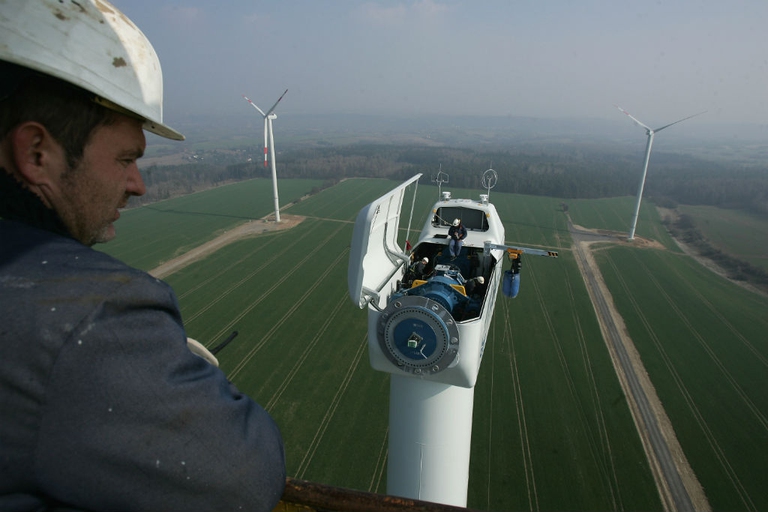
We met computer scientist Ramez Naam at the Singularity University summit 2017 in Milan. His words on the potential of renewables and technological innovation are encouraging.
Il Paese ha raggiunto il 95 per cento di produzione di elettricità da fonti rinnovabili, in poco più di 10 anni. Ecco come c’è riuscito.
The small South American country made its dream come true. A fairy tale started 10 years ago, when Uruguay decided to invest in energy independence. Since it didn’t have fossil fuels and was dependent on importations, the government decided to invest in renewables, mostly wind energy. Now, it is one of the South American countries to use the greatest amount of renewable energies. It has been a historic climb: from 84% in 2013 to 95%.
The government said in July at Expo: “Wind energy will represent 33% of total electricity produced in 2016, making Uruguay the country with the greatest wind exploitation for energy generation, outdoing Denmark, Spain, and Germany”.
A shift began in 2005, when the government started to invest 3% of GDP in renewables. According to The Guardian, “Energy investment – mostly for renewables, but also liquid gas – in Uruguay over the past five years has surged to 7 billion dollars, or 15% of the country’s annual GDP”, having a solid basis of hydroelectric power and investing in wind, biomass, and sun energy. Moreover, Uruguay participated in COP21 with a precise goal: cut CO2 emissions by 88% by 2017, compared to average levels of 2009-2013.
The country, also thanks to these policies, ranked 22nd in The Global Green Economy Index, which assesses countries’ green economy. The index takes into account indicators like air quality, biodiversity and habitats, transports, investments in renewables, agriculture, and tourism.
Yes, Uruguay is populated by only 3.5 million people, but it succeeded in showing the world that through effective policies the shift from fossil fuels to renewables is possible.
Siamo anche su WhatsApp. Segui il canale ufficiale LifeGate per restare aggiornata, aggiornato sulle ultime notizie e sulle nostre attività.
![]()
Quest'opera è distribuita con Licenza Creative Commons Attribuzione - Non commerciale - Non opere derivate 4.0 Internazionale.
We met computer scientist Ramez Naam at the Singularity University summit 2017 in Milan. His words on the potential of renewables and technological innovation are encouraging.
A fine febbraio in Danimarca l’eolico è arrivato a coprire tutta la domanda di energia, battendo un nuovo record.
Emanuele Taibi, analyst at renewable energy agency Irena, explains why islands are well placed to push forward toward a more sustainable development model based on renewables and technological innovation
Mountain View giant announced that the company’s data centres and offices will be exclusively powered by renewable energy by 2017. “And it’s just the beginning”.
Thanks to the National Offshore Wind Strategy, the US will build 86 GW of offshore wind by 2050, reducing greenhouse gas emissions by 1.8 percent.
Costa Rica is setting more and more records. Renewable energy supplied almost all the energy produced in 2015 in the Central American country, while in 2016 solar power will prevail. For about two months in a row, to be more precise 76 days, the country hasn’t burnt any fossil fuels. The National Centre for Energy Control wrote in a public
Low-cost wind turbines built with red plastic buckets and printer engines bring electricity to 14 households in the poorest regions of Hanoi.
107 ore di energia da fonti rinnovabili. Un record in tutta Europa. Il Portogallo in prima linea già dagli anni ’90.
È successo domenica scorsa quando, per qualche ora, i 55 GW di energia elettrica sui 58 consumati provenivano da fonti rinnovabili: solare, eolico ed idroelettrico.









